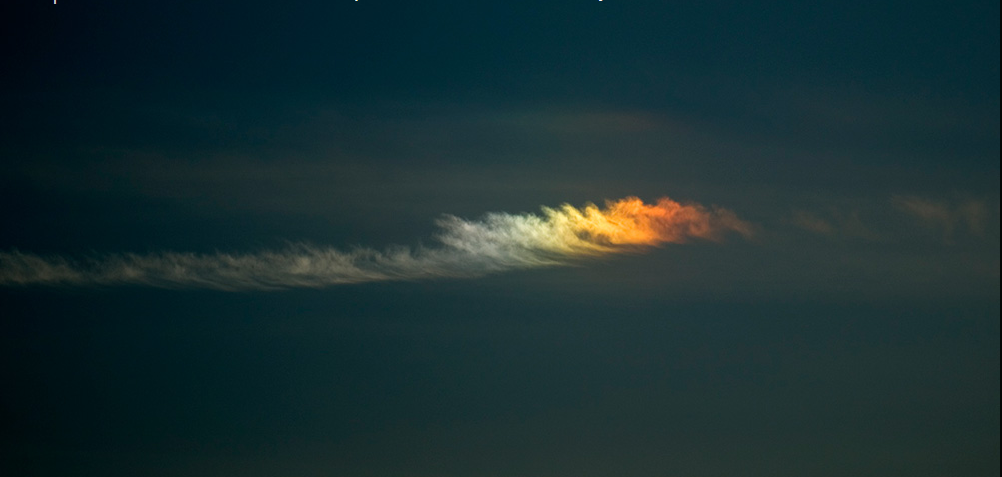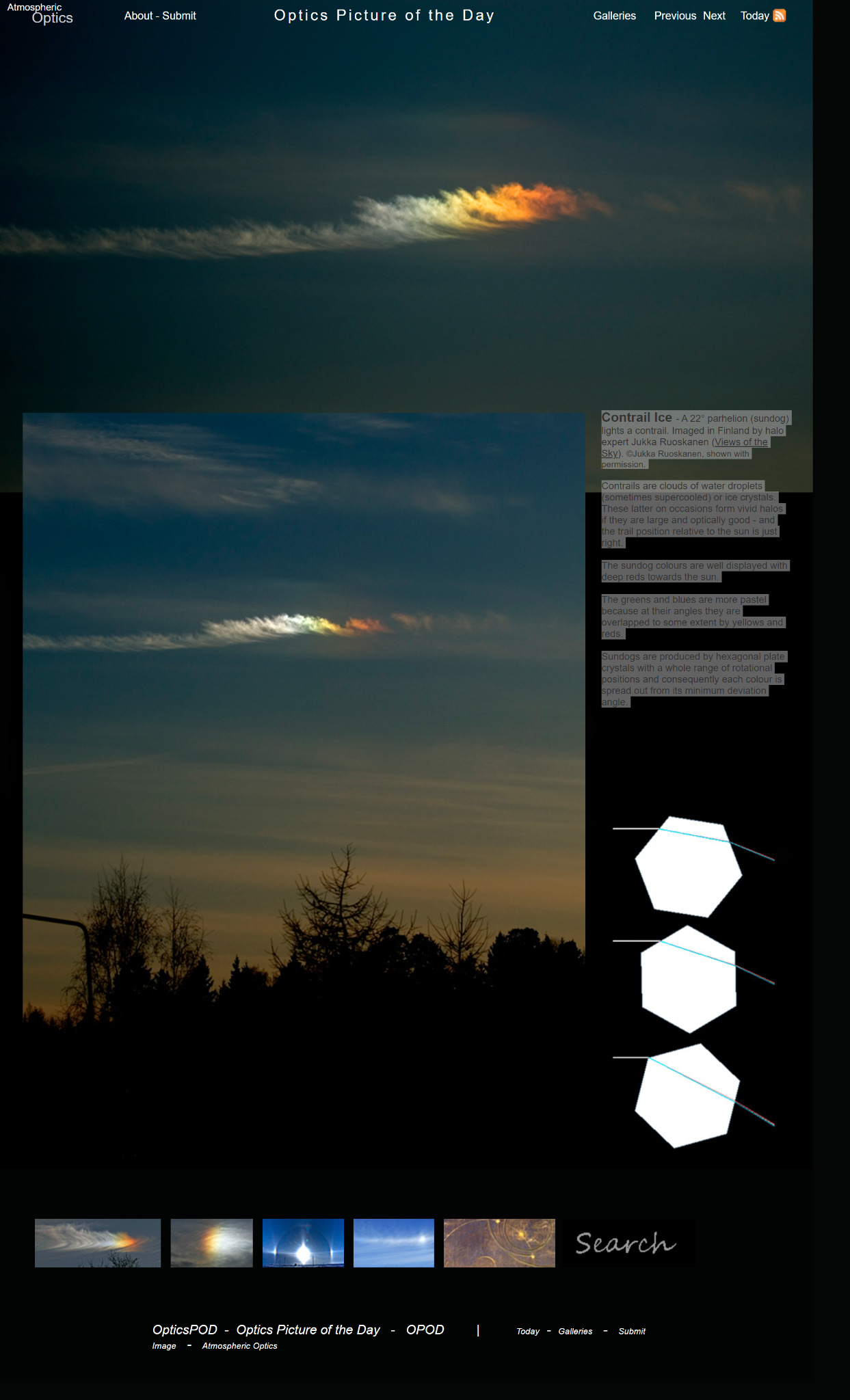OPOD - Icy Contrails
OPOD - Icy Contrails: Unveiling the Mysteries of Sundogs
Have you ever looked up at the sky and noticed a vibrant halo surrounding a contrail? These awe-inspiring phenomena, known as sundogs, are caused by the presence of ice crystals or supercooled water droplets within contrails. While contrails are typically composed of water vapor, under certain conditions, they can contain enough ice crystals to create vivid halos. In this article, we will delve deeper into the captivating world of icy contrails and unravel the science behind sundogs.
Contrails, short for "condensation trails," are clouds formed by the exhaust emissions from aircraft engines. When hot engine exhaust gases mix with the cold air at high altitudes, they quickly cool and condense into visible water vapor or ice crystals. The formation of contrails is influenced by factors such as temperature, humidity, and the composition of the exhaust gases. In some cases, these contrails can contain an abundance of ice crystals, leading to the creation of sundogs.
Sundogs are a type of atmospheric optical phenomenon characterized by bright spots of light appearing on either side of the sun. These spots often exhibit a range of colors, with deep reds observed closer to the sun and more pastel greens and blues further away. The color variations are a result of the different angles at which light is refracted and scattered by the ice crystals within the contrail.
The formation of sundogs involves hexagonal plate crystals with various rotational positions. As sunlight passes through these ice crystals, it undergoes refraction, causing the different colors to spread out at specific angles. This dispersion of colors creates the stunning display of hues observed in sundogs. The overlapping of colors occurs because the angles at which greens and blues are observed overlap with those of yellows and reds.
To witness a sundog, several conditions must align perfectly. Firstly, the contrail must contain a significant concentration of ice crystals or supercooled water droplets. Additionally, the contrail's position relative to the sun plays a crucial role. For sundogs to form, the contrail must be in the correct position to refract sunlight and create the desired optical effects. This combination of factors is relatively rare, making sundogs a captivating and elusive sight.
While sundogs are undoubtedly mesmerizing, they are not the only atmospheric phenomena associated with icy contrails. Other optical effects, such as halos, can also occur when ice crystals within contrails interact with sunlight. Halos are circular or elliptical rings of light that encircle the sun or moon. These rings are formed when light is refracted and reflected by the ice crystals, resulting in a stunning display of luminous arcs in the sky.
The study of atmospheric optics, including icy contrails and their associated phenomena, has captivated scientists and sky enthusiasts alike. Researchers continue to explore the intricate mechanisms behind these optical effects, seeking to deepen our understanding of the Earth's atmosphere and its interaction with light. By unraveling the mysteries of sundogs and other atmospheric phenomena, we gain valuable insights into the complex interplay between nature and light.
In conclusion, icy contrails offer a fascinating glimpse into the captivating world of atmospheric optics. Sundogs, with their vibrant colors and elusive nature, mesmerize those fortunate enough to witness them. As we continue to study and appreciate these optical wonders, we unlock a deeper understanding of our planet's atmosphere and its ability to create breathtaking displays of light. So, next time you find yourself gazing at the sky, keep an eye out for the mesmerizing dance of colors within icy contrails - a testament to the beauty and complexity of our natural world.

Contrail Ice - A 22° parhelion (sundog) lights a contrail. Imaged in Finland by halo expert Jukka Ruoskanen (Views of the Sky). ©Jukka Ruoskanen, shown with permission.
Contrails are clouds of water droplets (sometimes supercooled) or ice crystals. These latter on occasions form vivid halos if they are large and optically good - and the trail position relative to the sun is just right.
The sundog colours are well displayed with deep reds towards the sun.
The greens and blues are more pastel because at their angles they are overlapped to some extent by yellows and reds.
Sundogs are produced by hexagonal plate crystals with a whole range of rotational positions and consequently each colour is spread out from its minimum deviation angle.


Note: this article has been automatically converted from the old site and may not appear as intended. You can find the original article here.
Reference Atmospheric Optics
If you use any of the definitions, information, or data presented on Atmospheric Optics, please copy the link or reference below to properly credit us as the reference source. Thank you!
-
<a href="https://atoptics.co.uk/blog/opod-icy-contrails/">OPOD - Icy Contrails</a>
-
"OPOD - Icy Contrails". Atmospheric Optics. Accessed on November 26, 2024. https://atoptics.co.uk/blog/opod-icy-contrails/.
-
"OPOD - Icy Contrails". Atmospheric Optics, https://atoptics.co.uk/blog/opod-icy-contrails/. Accessed 26 November, 2024
-
OPOD - Icy Contrails. Atmospheric Optics. Retrieved from https://atoptics.co.uk/blog/opod-icy-contrails/.